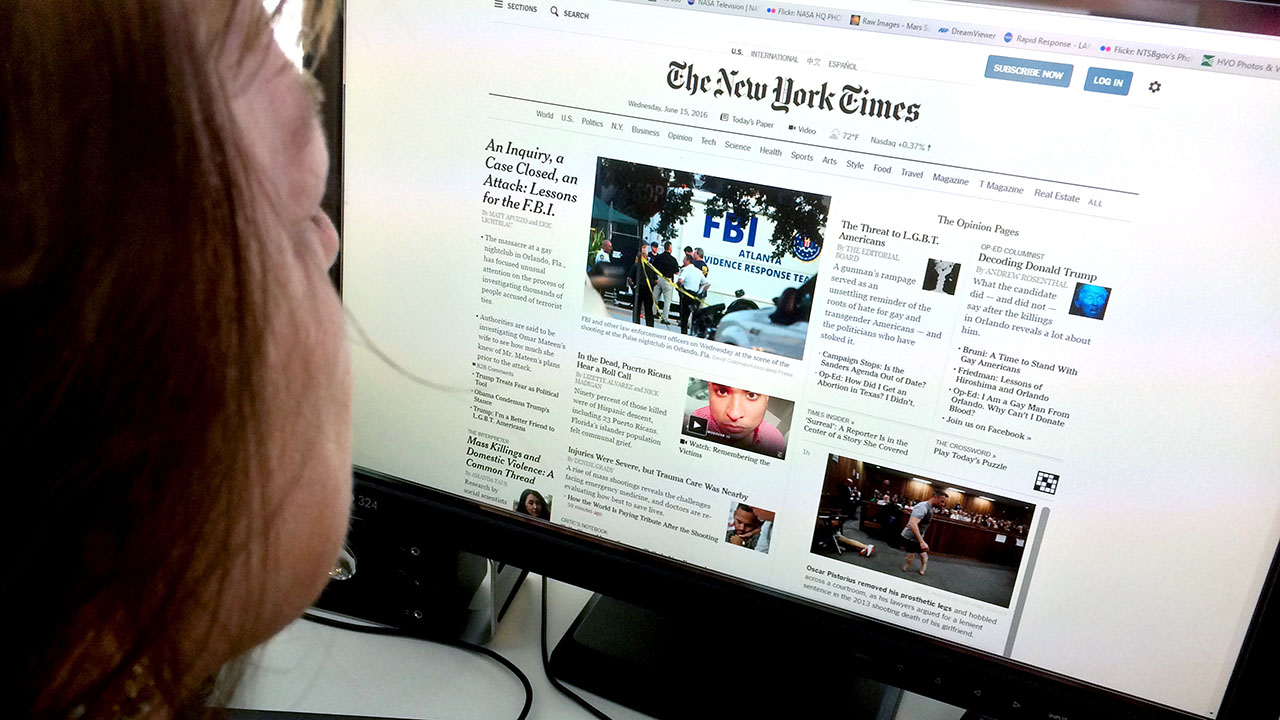5 Easy Facts About News Channels Explained
5 Easy Facts About News Channels Explained
Blog Article
Top Guidelines Of News Channels
Table of ContentsThe Basic Principles Of News Channels 5 Easy Facts About News Channels DescribedIndicators on News Channels You Need To KnowGetting The News Channels To Work
The premier shows will commonly air at night throughout "prime time", yet there are additionally early morning broadcasts of 2 to 3 hours in length. Moving news channels broadcast information web content 24 hours a day. The arrival of the web has permitted the regular 24-hour-a-day presentation of numerous video clip and audio information records, which are updated when added information comes to be available; lots of television broadcasters give material originally provided on-air in addition to special or auxiliary news web content on their sites.Terminals that use a "wheel" format have a tendency to keep to an established schedule of specific programming at particular details minutes on the hour, and among these sections is regularly a news bulletin. These brief notices will supply overviews of any kind of breaking news of passion, and might consist of neighborhood problems such as weather prediction or traffic records.

News broadcasts in the United States were originally transmitted over the radio. NBC started broadcasts in November 1926, with CBS entering manufacturing on September 25, 1927. Both initially reviewed similar topics, such as election outcomes, presidential launches, and various other issues of worry to the general public. However, NBC soon became the dominant force for amusement ability.
The Greatest Guide To News Channels
A basic change over time happened in the style of the night newscasts in a lot of nations. In the 1950s, tv was unique sufficient that it was considered amusement. In the 1960s and 70s, tv broadcasts often tended to be unusually "major" by later criteria, including more "difficult news" and much less light amusement blended in.

From the original source 2000 to 2010, overall viewership of tv program news continued to decrease. Some news-adjacent cable programs gained popularity and success in this era (such as the comedy-focused and the commentary-focused ). Their gains did not balance out the continuing high decrease in viewership of mainline network news.
What Does News Channels Do?
The National, which has actually aired on CBC Tv given that 1954, is the longest-running national network newscast in Canada.: CBC's (broadcast since 1975), Global's (broadcast since 2008), and CTV's (broadcast given that 1966 and presently the longest-running network newsmagazine in Canada). CTV's is the single national early morning information program on broadcast tv in Canada, and changed, which broadcast since 1975.
Neighborhood television terminals in the USA usually transmitted neighborhood information three to four times a day on standard: frequently airing at 4:30, 5:00, 5:30, or 6:00 a.m (News Channels).; noontime; 5:00 and 6:00 p.m. in the early night; and 10:00 or 11:00 p.m. Some terminals carry morning broadcasts at 4:00, 7:00, 8:00, or 9:00 a.m., midday broadcasts at 11:00 or 11:30 a.m., late afternoon broadcasts at 4:00 or 4:30 p.m., or very early night broadcasts at 5:00 or 6:00 p.m
in the Eastern and Pacific time areas or 9:00 p.m. in the Mountain and Central time zones in the U.S.). Terminals that create neighborhood broadcasts usually broadcast just one to as much over twelve hours of local news on weekdays and as little as one hour to as much view it now as 7 hours on weekends; information programming on weekends are generally limited to early morning and evening newscasts as the variable scheduling of network sporting activities shows (if a station is affiliated with a network with a sports department) usually stops most terminals from bring lunchtime broadcasts (nonetheless a couple of stations found in the Eastern and Pacific time areas do create weekend noontime newscasts). [] From the 1940s to the 1960s, broadcast tv terminals commonly provided local news programs just one to 2 times each evening for 15 mins (the normal length for many locally generated programs at the time); generally these programs broadcast as supplements to network-supplied night information programs or leadouts for primetime shows.
Little Known Facts About News Channels.
Information share contracts are most usual with stations co-owned. News Channels with a larger read this post here network affiliate or whose operations are collectively handled via a shared service or local advertising contract. In instances where a terminal with an existing news department participates in a news share agreement, it will result either the 2 departments combining or the outright conversion of broadcast manufacturing from internal to outsourced production.
The Big 3 broadcast television networks create morning and evening national broadcasts.
Report this page